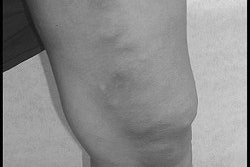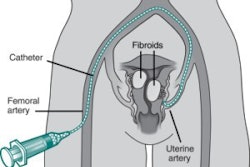Elsevier Science, St. Louis, 2003, $49
A wide range of medical specialists performs pain management and spine intervention procedures. Referral patterns, physician interest, access to suitable training, and reimbursement issues have dictated who performs and interprets such studies.
Presently, neuroradiologists, neurologists, neurosurgeons, orthopedic surgeons, and pain management anesthesiologists perform this intervention either independently or jointly. Patient evaluation and physical examination time, in addition to continuity of care issues, have diverted these procedures away from imaging specialists. As a result, many radiology residents and neuroradiology fellows may never encounter spinal interventions during their training. For this reason, a comprehensive text, including both clinical patient evaluation and detailed procedural instruction, is essential.
Image-Guided Spine Intervention is an ambitious work by radiologists Fenton and Czervionke from the Mayo Clinic in Jacksonville, FL. This 300-page text offers contributions predominantly from radiologists, with clinical information enhanced by anesthesia and neurosurgical perspectives.
The first chapter of the book is devoted to needle manipulation techniques, which are crucial to procedure performance. For those who do not routinely perform image-guided needle placements, this chapter reviews commonly used equipment and techniques.
The following nine chapters contain thorough, systematic discussions of more commonly performed spine intervention. Procedures discussed include facet, medial branch, and selective nerve root blocks; epidural and sacroiliac joint injections; spine biopsy and vertebroplasty; and discography as well as electro-thermal therapy.
All the chapters are organized in a similar fashion. The historical background of each procedure is addressed, followed by a detailed discussion of equipment and techniques used. Alternate techniques and approaches for the same procedure are discussed in-depth. Information on patient selection and contraindications to therapy are provided.
The chapters are enhanced by numerous high quality fluoroscopic and CT images. Several 3-D reconstructed CT images of the spine are shown in tandem with plain film examples for a clearer picture of difficult anatomy. The chapters conclude with complete case studies from evaluation through procedural and post-operative care.
The final chapter is written by an anesthesiologist and discusses the pharmacology of agents used by the operator for spine intervention.
A small weakness of the book is the omission of procedures such as epidural blood patch, spine radiofrequency ablation, and sacroplasty. However, this does not limit the usefulness of the book.
While Image-Guided Spine Intervention is highly recommend for physicians who are interested in these procedures, this text does not substitute for hands-on training and experience.
By Dr. Brian J. FortmanAuntMinnie.com contributing writer
June 19, 2003
Dr. Fortman is a neuroimaging specialist at Carolina Radiology Associates in Myrtle Beach, SC. He recently completed a neuroradiology fellowship at the Johns Hopkins Hospital in Baltimore.
If you are interested in reviewing books, let us know at [email protected].
The opinions expressed in this review are those of the author, and do not necessarily reflect the views of AuntMinnie.com.
Copyright © 2003 AuntMinnie.com



















